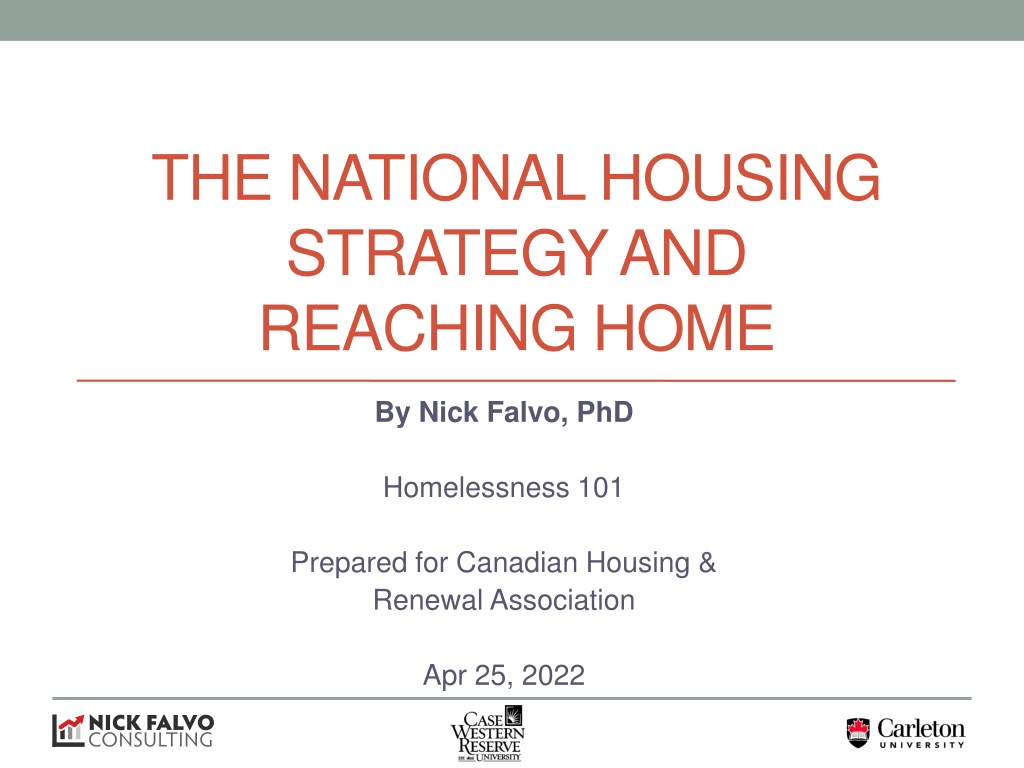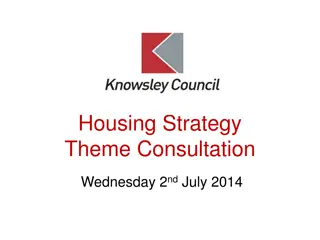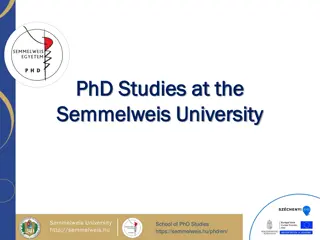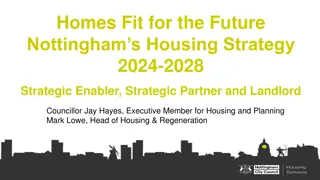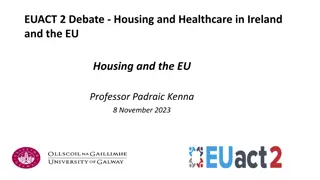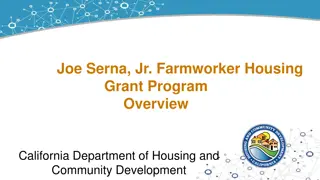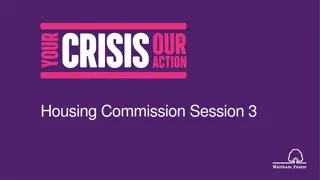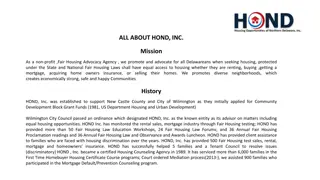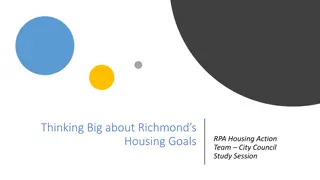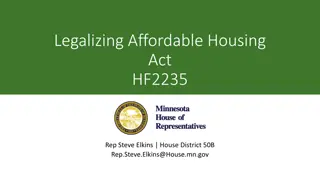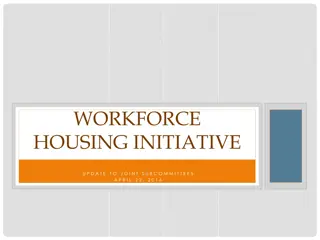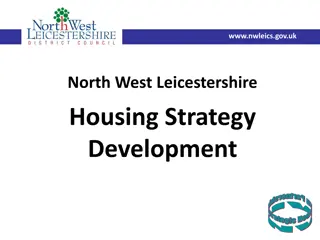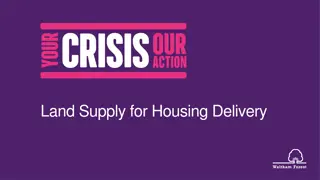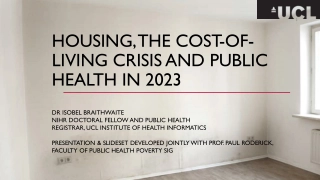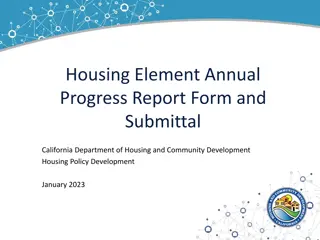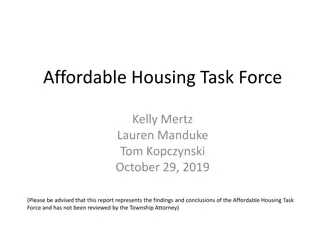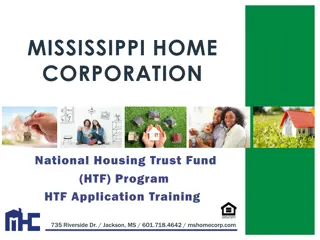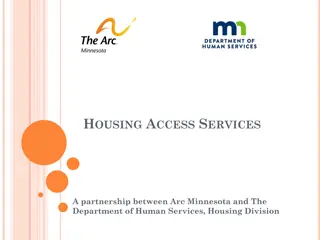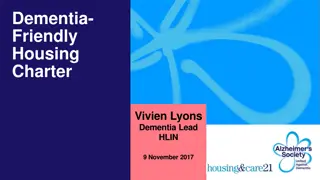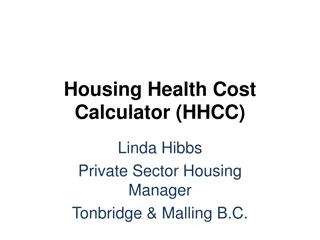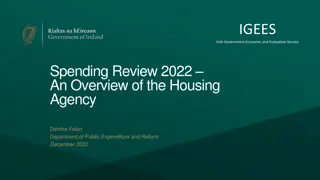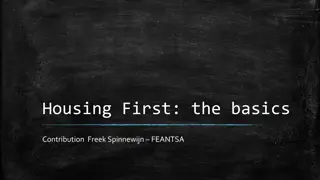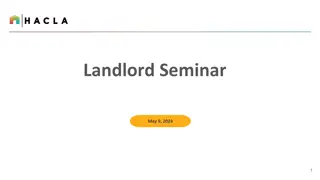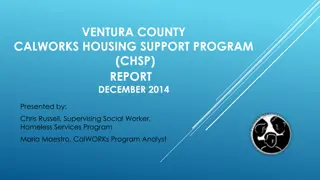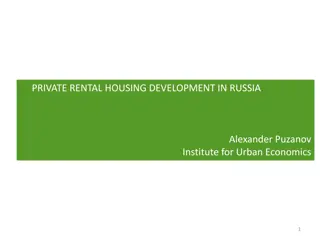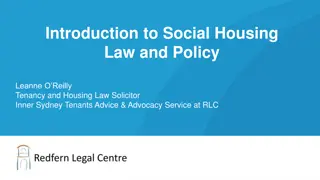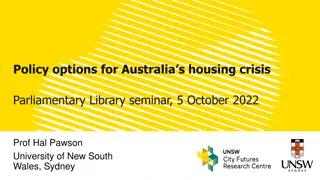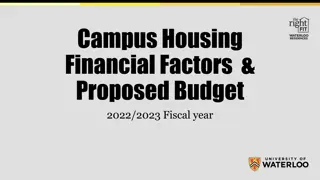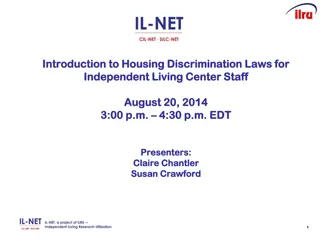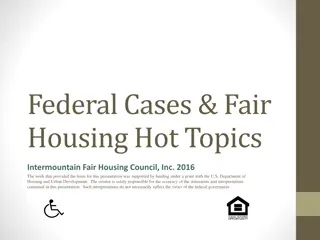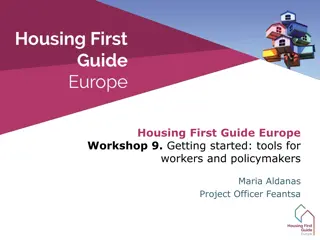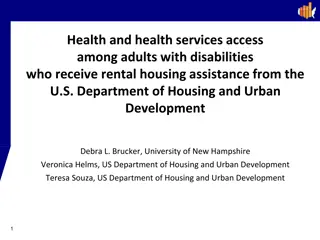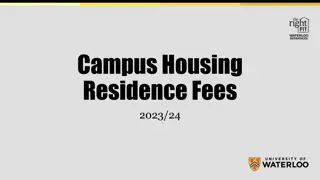Overview of National Housing Strategy & Reaching Home: Critical Insights by Nick Falvo, PhD
The National Housing Strategy (NHS) and Reaching Home initiatives in Canada, as discussed by Nick Falvo, PhD, shed light on the funding landscape, challenges in addressing chronic homelessness, gaps in supportive housing provisions, and the delayed implementation of the Canada Housing Benefit. Despite federal funding increases, more efforts are required to meet the goal of ending chronic homelessness and ensure effective implementation of key housing benefit programs.
Download Presentation

Please find below an Image/Link to download the presentation.
The content on the website is provided AS IS for your information and personal use only. It may not be sold, licensed, or shared on other websites without obtaining consent from the author. Download presentation by click this link. If you encounter any issues during the download, it is possible that the publisher has removed the file from their server.
E N D
Presentation Transcript
THE NATIONAL HOUSING STRATEGY AND REACHING HOME By Nick Falvo, PhD Homelessness 101 Prepared for Canadian Housing & Renewal Association Apr 25, 2022
Overview The NHS Reaching Home COVID responses Recent federal budgets
The funding landscape Across Canada, federal funding for homelessness remains rather modest. Prior to COVID, for each $1 invested federally, $13 was invested by other sources (mostly prov and mun dollars). What s more, less than 10% of new funding under the NHS has been earmarked towards the Trudeau government s goal of ending chronic homelessness.
The funding landscape (contd) In the 2016 federal budget, the Trudeau govt announced substantial (but time-limited) increases in funding for housing and homelessness. Then, the National Housing Strategy was unveiled in 2017.
National Housing Strategy Supportive housing refers to specialized housing for vulnerable populations that features professional (i.e., social work) staff support. This is especially helpful for people who have experienced long-term homelessness. The NHS contains no specific provisions for supportive housing, even though the current government has committed to ending chronic homelessness.
Canada Housing Benefit Central to the NHS was the planned launch of a Canada Housing Benefit (CHB). This benefit will consist of financial assistance to help low- income households afford the rent in both private and social housing units. Estimated: cost $4B over 8 years (w of costs coming fed govt and half from P/Ts.
Canada Housing Benefit (contd) It involves a partnership w provinces. It was supposed to take effect on 1 April 2020. As of 31 December 2020, however, just 7 provinces and territories had signed agreements, and just 5 were actually dispersing funds to households in need.
Canada Housing Benefit (contd) The 2021 federal budget announced an additional $315.4M over seven years for the Canada Housing Benefit, starting in 2021-22.
Canada Housing Benefit (contd) Research I did in May 2021 finds that cities have typically targeted it to a combination of households experiencing homelessness and to households at risk of experiencing homelessness. Several provinces have incorporated it into existing housing affordability schemes (and have hopefully not used it as a substitute for previous provincial or territorial funding).
Reaching Home Reaching Home is the name of Canada s new homelessness strategy. Fed govt framed this as being part of the NHS. Released in June 2018. It replaces the Homelessness Partnering Strategy. Reaching Home officially launched on 1 April 1 2019.
Reaching Home (contd) New communities (beyond the current 61 Designated Communities) can now apply for Reaching Home funding. They are as follow: Abbotsford, BC; Chilliwack, BC; Cowichan Valley, BC; Lambton County, ON; Cochrane District (Timmins), ON; Kenora, ON.
Reaching Home (contd) Reaching Home encourages communities to use better triage (e.g., CAA) and better data collection. All communities will be required to have CAA. Federal funding will be provided to Designated Communities to help them with this. This will help communities to demonstrate progress against outcomes.
Reaching Home (contd) Communities that already had an HMIS system in place were allowed to keep it. New communities or communities without an HMIS are required to adopt HIFIS.
Reaching Home (contd) In terms of eligible activities, Reaching Home will be considerably more flexible than was HPS. Communities aren t as strictly policed on HF as previously. For example, there will be increased flexibility to channel funding to prevention.
COVID measures The Government of Canada s COVID-19 Economic Response Plan, announced on 13 March 2020, includes an additional $157.5M in one-time funding for Reaching Home. This COVID-19 funding enhancement came with much more flexibility than previous Reaching Home funding (e.g., with respect to stipulation about provincial areas of responsibility).
COVID measures (contd) Further, on 21 Sep 2020, the Government of Canada announced an additional $236.7M for Reaching Home (another one-time enhancement).
Recent budgets Annual federal funding for homelessness has roughly doubled since Trudeau became Prime Minister (not including COVID measures). When Trudeau came to power in 2015, annual funding for this initiative was just $119 million. Reaching Home s base funding for 2022-23 (not including COVID-related funding) is $241 million.
Rapid Housing Initiative In Sep 2020, the Government of Canada announced $1B for new modular housing, the acquisition of land, the conversion of existing non-residential buildings, and the reclamation of closed or derelict properties. This is called the Rapid Housing Initiative (RHI).
Rapid Housing Initiative (contd) Very fast grant application Capital costs fully covered. Some of the people being housed via the RHI have been experiencing homelessness (but a lack of operating $ will make it challenging to support person who ve been chronically homeless).
Rapid Housing Initiative (contd) RHI projects include a broad list of eligible target populations (one of which is persons experiencing homelessness). The City of Toronto aims to target most of its RHI units to persons experiencing chronic homelessness. RHI is viewed as being the best federal housing initiative right now to target chronic homelessness.
Rapid Housing Initiative (contd) Many projects are still awaiting word on whether their respective prov got will provide operating $, which will in turn determine what kinds of social work support can be provided (and which specific households can be accommodated). Some approved projects have received commitments of municipal support, typically in the form of waived fees, free land or discounted land.
Rapid Housing Initiative (contd) The 2021 federal budget announced an additional $1.5B for the RHI for 2021-22. The 2022 federal budget announced another $1.5B over two years for RHI.
More from 2022 federal budget The 2022 federal budget also announced $62.2M over 3 yrs (beginning in 2024-25) for a new Veteran Homelessness Program that will provide services and rent supplements to veterans experiencing homelessness ; It further announced $18.1M over 3 yrs for research on chronic homelessness.
Thank you What s on your mind?
